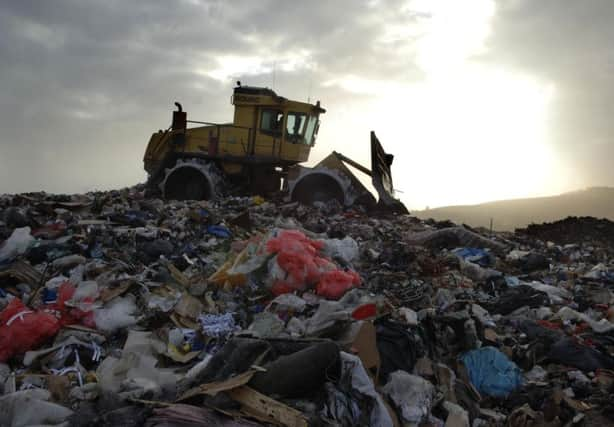How we can all help reduce Scotland’s food waste


Food and drink are, of course, vital for our very existence. But whether it’s down to lack of planning, buying more than we need or not having the stomach for mealtime leftovers, every year Scottish households allow 630,000 tonnes of precious food and drink to go to waste.
Around half is ditched without any attempt being made to eat it.
Advertisement
Hide AdAdvertisement
Hide AdIt tots up to a massive £1bn annual food waste bill for the nation – that’s £470 a year for the average household – and makes up a third of all household waste in Scotland.
Not only that, food dumped in landfill means the energy used to produce it and transport it has gone to waste too, while the methane gas it produces harms the environment.
To help stop the rot, a major new Scottish Government campaign is underway, aimed at encouraging us all to rethink what we use, how we use it and what we throw away – including tonnes of food and drink.
A series of videos fronted by comic Phil Kay point out how ‘Stupidly Simple’ it is to make tiny changes, such as shopping smarter and using what we can, which together can make a big impact towards reaching Scotland’s ambitious greenhouse gas targets.
So what small steps can we make to help stop the food rot?
According to Iain Gulland, chief executive of Zero Waste Scotland, prevention is far better than trying to find a cure for dealing with tonnes of rotting food.
“Wasting food is money down the drain for Scotland’s householders and businesses, and sending it to landfill is bad for the environment,” he says.
“Preventing food waste, which we promote through the Love Food Hate Waste campaign, is the best option – for household budgets, and the environment.”
A fifth of all food we buy is wasted: vegetables, milk, home-made meals, fizzy drinks, fruit juices and smoothies, poultry, pork and cakes, top the list.
Advertisement
Hide AdAdvertisement
Hide AdEvery day we throw away around 5.8m potatoes, 2.5m slices of bread, 300,000 slices of cheese and 1.9m slices of ham.
According to Zero Waste Scotland the waste could be prevented by shopping smarter, sticking to a shopping list, planning our meals to avoid temptation in the supermarket aisles, freezing what we don’t use and using up our leftovers.
Adds Mr Gullard: “We’re seeing great strides in food waste prevention through the Love Food Hate Waste campaign and in household food waste recycling through council collections (now available to over 1.3m households).
“Businesses are also tackling this problem. With all sectors pulling together in Scotland, we can cut the amount of food needlessly sent to landfill.”
Food waste that can’t be consumed, such as banana skins, egg shells and bones, still has a use, either on the compost heap at home or in the food waste bin to become liquid fertiliser.
Eventually Edinburgh and Midlothian food waste will go to a new anaerobic digestion facility near Forth Kinnaird in Edinburgh, capable of converting 30,000 tonnes of food waste per year into electricity.
While householders can do their bit, organisations like UK-wide FareShare and the Edinburgh Cyrenians Trust have food waste programmes aimed at redistributing tonnes of excess food and drink to those in need.
The Cyrenians’ Good Food programme takes surplus quality food from producers and retailers and gives it to 60 agencies who work with homeless and socially excluded people. The project prevents nine tonnes of food going to landfill every week.
Advertisement
Hide AdAdvertisement
Hide AdThe charity also runs food education sessions which provide advice on menu planning, food budgeting and turning leftovers into new meals.
But preventing waste is just one element of the war on waste. Another is the distance food travels from farm to plate – in some cases, half way around the world.
Websites like eattheseasons.co.uk point out that by eating seasonally and checking our food’s origins we can not only help the environment but support local producers.
And we could always grow our own. The Federation of City Farms and Gardens (www.farmgarden.org.uk) puts would-be gardeners in touch with 46 community gardens around Scotland, while Edinburgh Garden Partners (www.edinburghgardenpartners.org.uk) matches people who want to grow fruit and vegetables with others who have gardens but can’t cope with the work involved in keeping them.